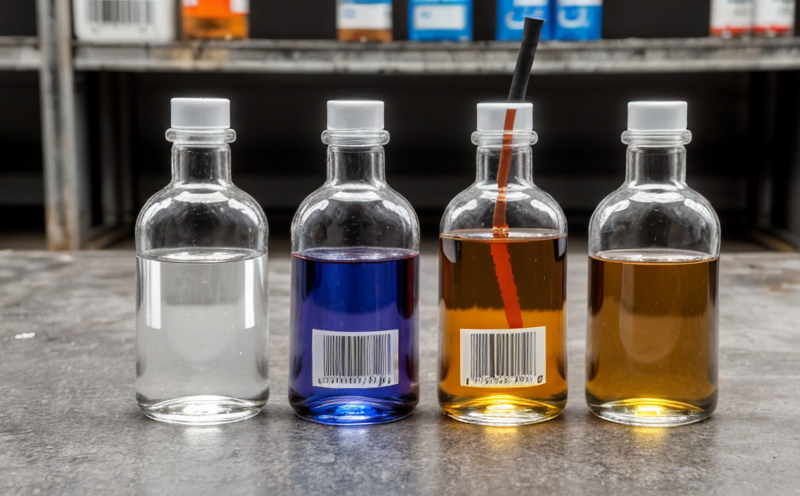ISO 22088 Chemical Stress Cracking Stability Testing
The ISO 22088 standard addresses a critical aspect of material performance in chemical stress cracking stability testing. This service is essential for ensuring that materials used in industrial applications, such as pipelines and pressure vessels, can withstand harsh chemical environments without failing due to stress cracking.
Stress cracking is a form of material degradation where a crack propagates under the influence of tensile stress and specific environmental conditions like corrosive chemicals. This phenomenon can lead to catastrophic failures in equipment and infrastructure if not properly addressed during design and manufacturing stages. ISO 22088 provides a standardized method for simulating these challenging environments and evaluating materials' resistance to such degradation.
The testing process involves subjecting the material samples to controlled chemical exposure, stress, and temperature conditions that mimic real-world operational scenarios. This allows for early identification of potential issues before products are deployed in high-stress environments. The service covers a wide range of chemicals commonly encountered in industrial processes, including acids, bases, solvents, and oxidizing agents.
Materials tested under this standard include metals, alloys, polymers, and composites used in various sectors such as petrochemicals, oil & gas, pharmaceuticals, and aerospace. The testing helps ensure compliance with international safety regulations while also enhancing product performance and reliability.
The ISO 22088 protocol ensures consistency and reproducibility of test results by providing specific guidelines for specimen preparation, exposure conditions, and assessment methods. This standardization is crucial for validating the integrity of materials across different manufacturing processes and geographical locations.
During testing, specimens are exposed to a combination of chemical stressors and mechanical stresses. The extent and rate of cracking provide critical data on material performance. This information is vital for optimizing design parameters, selecting appropriate raw materials, and improving overall product quality.
The results obtained from ISO 22088 testing can significantly impact various aspects of a business, including operational safety, regulatory compliance, and customer satisfaction. By identifying potential weaknesses early in the development cycle, companies can implement corrective measures to enhance durability and reliability, ultimately leading to cost savings and improved market competitiveness.
Given the critical nature of this service, it is recommended that quality managers, compliance officers, R&D engineers, and procurement professionals collaborate closely with laboratory technicians during testing. This ensures accurate interpretation of results and informed decision-making regarding material selection and process improvements.
Customer Impact and Satisfaction
The success of ISO 22088 chemical stress cracking stability testing directly impacts customer satisfaction by ensuring product reliability and safety. By adhering to this standard, businesses can demonstrate their commitment to quality and compliance, thereby building trust with end-users.
For instance, pipeline operators benefit from reduced maintenance costs and increased operational efficiency due to fewer failures caused by stress cracking. Similarly, manufacturers of medical devices or pharmaceutical packaging materials gain competitive advantages through enhanced product performance and extended shelf life.
The service also contributes positively to customer satisfaction by providing robust evidence of material integrity, which is crucial for regulatory approval processes. This can lead to faster market entry times and higher sales volumes once products are successfully validated against ISO 22088 standards.
Moreover, the ability to predict and prevent failures early in the design phase translates into better service experiences for end-users who rely on these materials for their daily operations. This proactive approach not only enhances customer loyalty but also fosters long-term partnerships with satisfied clients.
Environmental and Sustainability Contributions
The ISO 22088 chemical stress cracking stability testing plays a vital role in promoting sustainability by identifying materials that can withstand harsh environmental conditions without degrading. This contributes to the reduction of waste associated with premature failures, which is particularly important for industries dealing with corrosive chemicals.
By ensuring that materials used in critical infrastructure like pipelines and storage tanks are resistant to stress cracking, this service helps prevent leaks and spills that could contaminate local ecosystems. The use of sustainable materials also aligns with broader environmental goals by minimizing the need for frequent replacements or repairs.
The testing process itself is designed to be as environmentally friendly as possible, utilizing non-hazardous chemicals where feasible and adhering strictly to waste disposal regulations. This minimizes the laboratory's ecological footprint while maximizing its contribution to sustainable practices.
Furthermore, by promoting the use of durable materials that require less frequent maintenance or replacement, ISO 22088 testing supports a circular economy model. This approach reduces resource consumption and promotes recycling, thus contributing to long-term environmental stewardship.
Competitive Advantage and Market Impact
- Maintains regulatory compliance: Ensures that products meet the rigorous requirements set by international standards, which is crucial for market access in many countries.
- Promotes product longevity: By identifying materials resistant to stress cracking early in development, businesses can extend the useful life of their products, reducing waste and supporting sustainability efforts.
- Enhances reputation: Adhering to ISO 22088 standards demonstrates a company's commitment to quality and safety, thereby enhancing its brand image among consumers and stakeholders.
- Faster time-to-market: By validating materials through thorough testing before launch, businesses can reduce development cycles and bring innovative solutions to market sooner.





